
 Mrs. Mayuri Mathur
Mrs. Mayuri Mathur
The Epidemiology of Dengue Fever: Global and Regional Burden of Disease
Dengue fever is a mosquito-borne viral disease that poses a significant public health threat in many parts of the world, particularly in tropical and subtropical regions. It is caused by the dengue virus, transmitted to humans through the bite of infected Aedes mosquitoes, primarily Aedes aegypti. Dengue fever is characterized by a range of symptoms, from mild flu-like illness to severe, life-threatening manifestations.
The incidence of dengue fever has been steadily increasing over the past few decades, making it one of the most common mosquito-borne diseases globally. Dengue fever is endemic in more than 100 countries, mainly in tropical and subtropical regions.
The dengue virus exists as four distinct serotypes, referred to as DENV-1, DENV-2, DENV-3, and DENV-4. Infection with one serotype provides lifelong immunity against that specific serotype but does not confer protection against the other serotypes. This means that individuals can experience multiple dengue infections throughout their lives, with the risk of developing severe dengue increasing with subsequent infections.
The global and regional burden of dengue fever is significant, with millions of cases reported each year. In most hyperendemic areas, dengue primarily affects adolescents and adults. However, recent data from hospitals in Thailand and China showed that dengue infection is also becoming a significant threat for older individuals.
Global Burden of Dengue Fever:
Dengue fever is endemic in more than 100 countries, particularly in tropical and subtropical regions. The World Health Organization (WHO) reports ten-fold surge in dengue cases since past decade with 100 -400 million cases annually, making dengue fever one of the most common infectious diseases worldwide. Since the start of 2023, continuous transmission and a sudden rise in dengue cases have led to nearly five million cases and over 5000 dengue-related deaths reported in over 80 countries/territories, nearing a historic peak.
Dengue fever is a leading cause of illness and hospitalization among children in some countries. It affects both urban and rural areas, with the highest burden observed in countries in Southeast Asia, the Americas, and the Western Pacific. The disease affects individuals of all ages and socioeconomic backgrounds, with both urban and rural populations at risk.
The economic burden of dengue fever is substantial, including healthcare costs, productivity losses, and the impact on affected families and communities. This burden is particularly challenging for low- and middle-income countries with limited resources and fragile healthcare systems.
Regional Burden of Dengue Fever
It is important to note that the burden of dengue fever can vary within regions, with certain countries or specific areas within countries experiencing higher case numbers and more severe outbreaks. Factors such as population density, urbanization, climate, and local vector control measures influence the regional burden of dengue fever. The regional burden of dengue fever is as follows:
1. Southeast Asia: Southeast Asia is one of the most heavily affected regions by dengue fever. The region accounts for a significant proportion of global dengue infections, with frequent outbreaks and a substantial burden on healthcare systems. Countries such as Thailand, Indonesia, Vietnam, Bhutan, Taiwan, Sri Lanka, and Malaysia experience high dengue cases.
2. Americas: The Americas, particularly Latin America and the Caribbean, also bear a significant burden of dengue fever. The region experiences endemic and epidemic dengue transmission, with periodic outbreaks affecting various countries. Countries such as Brazil, Mexico, Colombia, Cuba, Dominica, Dominican Republic, and Puerto Rico have reported frequent cases of dengue fever.
3. Western Pacific: The Western Pacific region, including countries like the Philippines, Malaysia, Cambodia, and Papua New Guinea, faces a substantial burden of dengue fever. The region is characterized by a high prevalence of dengue cases, with some areas experiencing endemic transmission throughout the year. Dengue outbreaks and epidemics occur periodically, posing significant challenges to public health systems.
4. Africa: Dengue fever is increasingly recognized as a public health concern in parts of Africa. Countries like Senegal, Cape Verde, and Mauritius have reported dengue cases. However, the burden of dengue in Africa is less well-documented than in other regions, and surveillance systems may be limited, making it challenging to assess the full extent of the problem.
5. Eastern Mediterranean: Dengue fever is also reported in some countries in the Eastern Mediterranean region, including Saudi Arabia, Pakistan, and Yemen. The burden of dengue in this region varies, with sporadic outbreaks occurring in specific areas.
Dengue fever in India
The burden of dengue fever in India is significant, with the country experiencing a high number of cases annually. India is considered hyperendemic for dengue fever, with outbreaks occurring throughout the year.
According to the National Vector Borne Disease Control Program (NVBDCP), approximately 34,000 dengue cases were reported in 2020. However, it is essential to note that the actual number of cases is likely much higher due to underreporting and limited surveillance systems.
Although dengue fever is widespread across India, affecting both urban and rural areas. Regions with high population density, such as cities and peri-urban areas, often experience a higher burden of dengue cases, with states like Kerala, Tamil Nadu, Maharashtra, Karnataka, and Delhi consistently reporting a large number of dengue cases.
Dengue fever primarily affects children and young adults. However, cases have also been reported in other age groups, including older individuals. The severity of the disease can vary, with some patients progressing to severe dengue, particularly in individuals with comorbidities or weakened immune systems.
Conclusion
The burden of dengue fever varies within regions, with certain areas experiencing higher case numbers and more severe outbreaks. Factors such as population density, urbanization, climate, and vector control measures influence the regional burden of dengue.
Preventing dengue fever includes vector control strategies, public awareness campaigns, early diagnosis, and prompt treatment. Developing effective vaccines and strengthening healthcare systems are also crucial in reducing the global and regional burden of dengue fever.

Mrs. Mayuri Mathur
Mrs. Mayuri Mathur is a Senior Medical Writer (Patient education and digital) and seasoned content creator with a rich tapestry of expertise spanning over ten years. With a diverse background in content creation, she brings a wealth of experience to the table, from crafting insightful medical articles to developing comprehensive patient education materials, dynamic press releases, and captivating brochures and website content. Throughout her illustrious career, she has demonstrated an exceptional knack for distilling complex medical concepts into easily understandable content, making her a trusted resource for both professionals and lay audiences alike. Her meticulous attention to detail and innate creativity have enabled her to deliver content that not only informs but also engages and inspires. Whether elucidating intricate medical procedures or crafting compelling marketing materials, her versatility and dedication shine through in every project she undertakes. Her passion for writing, coupled with her profound understanding, makes her an invaluable asset to any team or project. In a constantly evolving digital landscape, where effective communication is paramount, Mrs. Mayuri Mathur stands out as a beacon of excellence, consistently delivering top-notch content that resonates with audiences across diverse platforms.

.png)
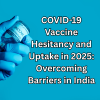
.png)
.png)
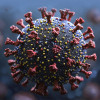

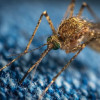
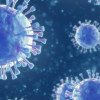
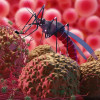



Please login to comment on this article